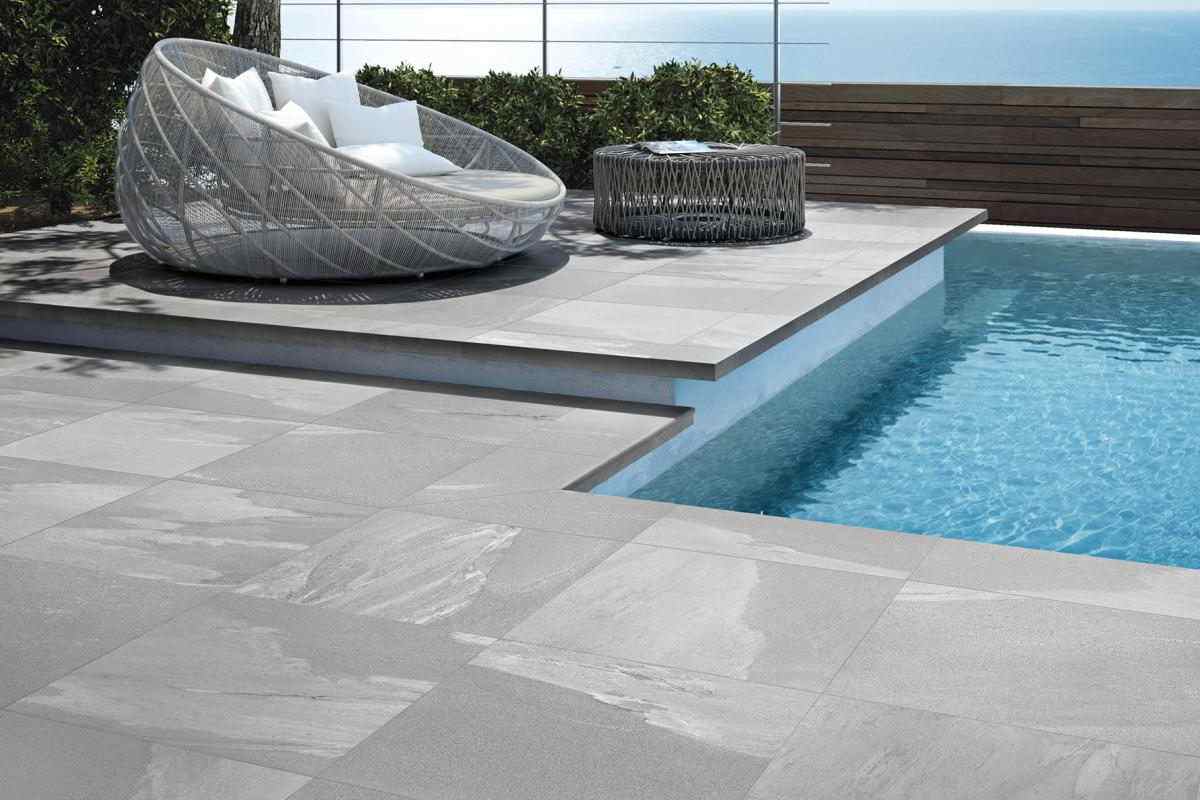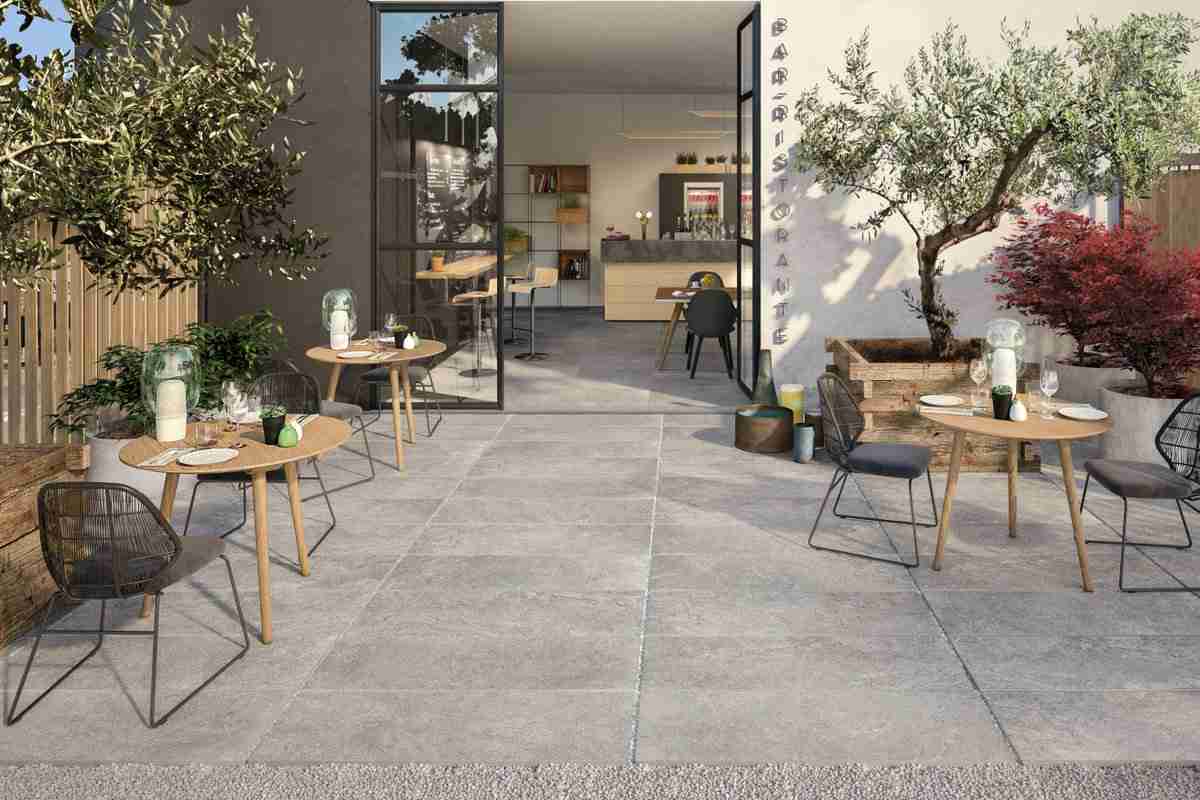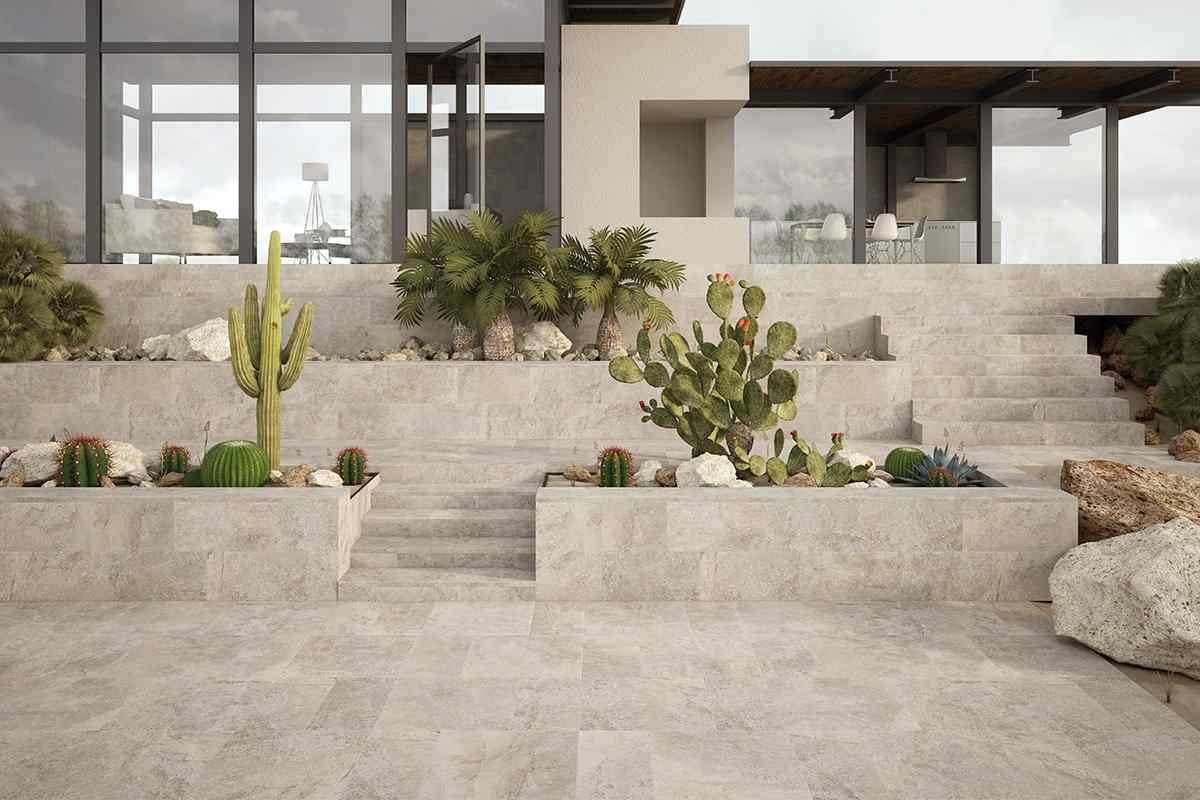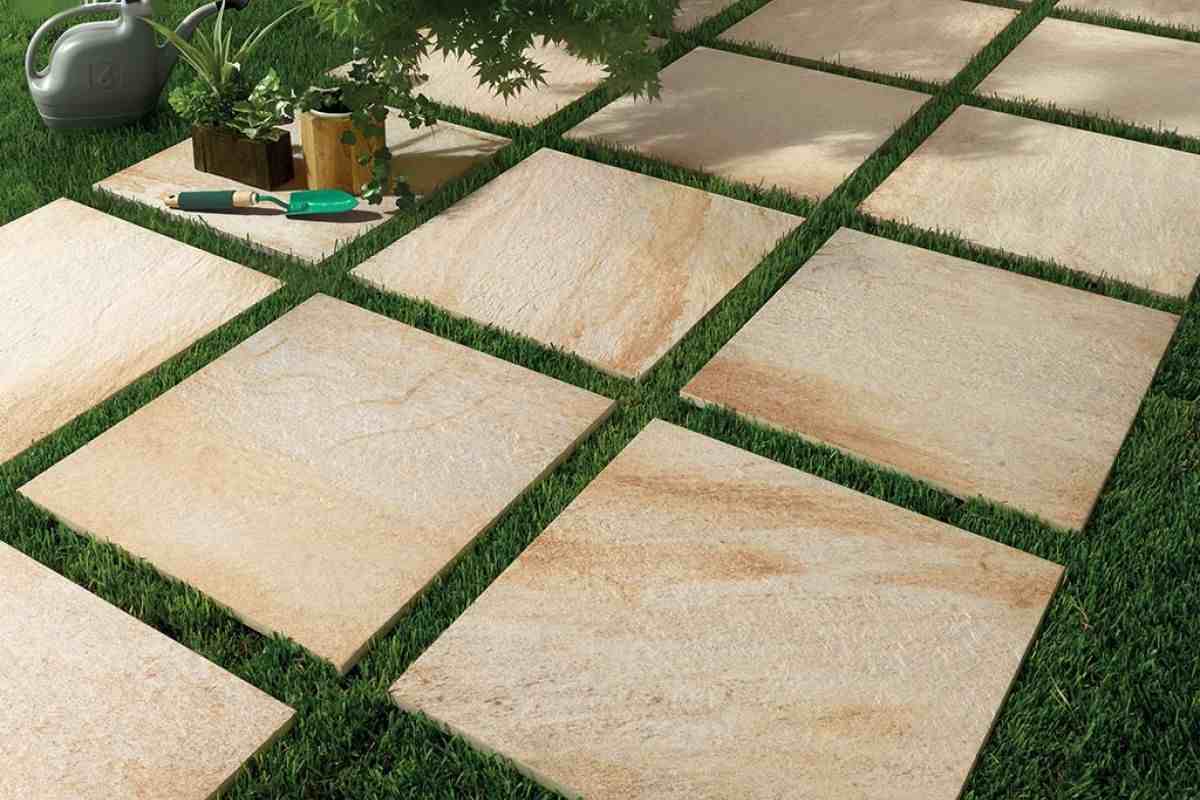Everyone desires to renovate their front and rear porches and yards. You will need different outdoor flooring tiles for your renovation, but you may not be sure which type of tile to use. Ceramic or porcelain tiles are wonderful options, but it is important to examine their individual shortcomings. Because they are available in a vast array of hues, patterns, and designs, ceramic tiles are typically the most popular alternative. They may be used both indoors and outdoors, but if you intend to use them to refurbish your outdoor environment, they must have a high PEI (Porcelain Enamel Institute) rating. This necessitates that they be exceptionally resilient, as indicated by a score of 4 or 5. To avoid a slippery, dangerous surface, outdoor ceramic tiles should be unglazed.  As outdoor usage of ceramic tiles necessitates a number of considerations, porcelain tiling is far preferable. Outdoor porcelain tiles are available in a variety of styles. They can have a brick, stone, or rock look, among others. Due to their superior hardness, longevity, and absence of porosity, porcelain tiles are more suited for outdoor tile restorations than ceramic tiles. They are often resistant to scratches, need minimal maintenance, and are slip-resistant, making them suitable for outdoor use. At first look, ceramic and porcelain tiles have a similar appearance and texture. Numerous examples of each are readily available at home improvement stores and tile shops. However, one's history predates the other by at least 5,500 years. Ancient Egypt is where we first learned about ceramic tiles, which were originally used to decorate dwellings with unglazed, blue-glazed bricks. Not until much later, in the fifteenth century A.D. in Chinese towers, did porcelain tiles enter the scene. Today, ceramic and porcelain tiles are commonly used on outdoor surfaces such as patios and decks. Find out how these two forms of tiling are utilized outdoors. Porcelain and ceramic tiles can be used on patios and other outdoor surfaces. Both of these flooring materials are kiln-dried clay products that have been shaped into hard, moderately resilient forms. It all boils down to manufacturing and compensating for differences. The clay employed in the production of porcelain tiles is finer and more refined. During the production process, porcelain tile clay is compressed more tightly into the desired form, resulting in denser, heavier tiles than those manufactured of ceramic. Also cooked at higher kiln temperatures, porcelain tiles become more durable, scratch-resistant, and robust.
As outdoor usage of ceramic tiles necessitates a number of considerations, porcelain tiling is far preferable. Outdoor porcelain tiles are available in a variety of styles. They can have a brick, stone, or rock look, among others. Due to their superior hardness, longevity, and absence of porosity, porcelain tiles are more suited for outdoor tile restorations than ceramic tiles. They are often resistant to scratches, need minimal maintenance, and are slip-resistant, making them suitable for outdoor use. At first look, ceramic and porcelain tiles have a similar appearance and texture. Numerous examples of each are readily available at home improvement stores and tile shops. However, one's history predates the other by at least 5,500 years. Ancient Egypt is where we first learned about ceramic tiles, which were originally used to decorate dwellings with unglazed, blue-glazed bricks. Not until much later, in the fifteenth century A.D. in Chinese towers, did porcelain tiles enter the scene. Today, ceramic and porcelain tiles are commonly used on outdoor surfaces such as patios and decks. Find out how these two forms of tiling are utilized outdoors. Porcelain and ceramic tiles can be used on patios and other outdoor surfaces. Both of these flooring materials are kiln-dried clay products that have been shaped into hard, moderately resilient forms. It all boils down to manufacturing and compensating for differences. The clay employed in the production of porcelain tiles is finer and more refined. During the production process, porcelain tile clay is compressed more tightly into the desired form, resulting in denser, heavier tiles than those manufactured of ceramic. Also cooked at higher kiln temperatures, porcelain tiles become more durable, scratch-resistant, and robust.  Ceramic tiles are more porous and less dense. You may varnish them for increased sheen and protection, or you can leave them unglazed for a rougher, more natural appearance. Due to their density, they are less resistant to water and stains than porcelain tiles, especially if they are unglazed. If you want your deck or patio to last as long as possible and be subjected to heavy foot traffic, porcelain tiles are the ideal alternative. Choose unglazed ceramic tiles for your patio if you are on a budget and like a more casual, natural look. If you like a colorful, eye-catching deck or patio, glazed ceramics may give you with more color and pattern options. When choosing porcelain or ceramic tiles, consider the integrity of the surface you wish to tile. If you don't utilize a tile uncoupling membrane before to putting thin-set mortar and tiles, the subfloor must be exceedingly robust and well-supported. This will prevent the subfloor from bending under foot traffic. Additionally, the surface beneath the tile should experience minimal to no expansion or contraction. Even with a decoupling membrane, a tiled surface has a low tolerance for movement. Your tiled deck or patio may develop grout line fractures due to annual expansion and contraction or underfloor movement. Outdoor tile that complements the style of the backyard is an essential element of the landscaping, regardless of the style of the backyard, from the lush vegetation and winding walks of a cottage-style plot to the clean, straight lines of a contemporary design or any other style. Obviously, outdoor tile must survive much more than interior tile, since it must also withstand temperature fluctuations and the impacts of the weather. If the wrong type of tile is selected, damage and visual deterioration may ensue. Porcelain may be as durable and beautiful for a garden floor as it is for an inside one. Porcelain is one of the unexpected tile materials that can be used outside as well as indoors in bathrooms and kitchens. Because they do not absorb water and will not fracture in the case of frost, porcelain tiles are ideal for the yard.
Ceramic tiles are more porous and less dense. You may varnish them for increased sheen and protection, or you can leave them unglazed for a rougher, more natural appearance. Due to their density, they are less resistant to water and stains than porcelain tiles, especially if they are unglazed. If you want your deck or patio to last as long as possible and be subjected to heavy foot traffic, porcelain tiles are the ideal alternative. Choose unglazed ceramic tiles for your patio if you are on a budget and like a more casual, natural look. If you like a colorful, eye-catching deck or patio, glazed ceramics may give you with more color and pattern options. When choosing porcelain or ceramic tiles, consider the integrity of the surface you wish to tile. If you don't utilize a tile uncoupling membrane before to putting thin-set mortar and tiles, the subfloor must be exceedingly robust and well-supported. This will prevent the subfloor from bending under foot traffic. Additionally, the surface beneath the tile should experience minimal to no expansion or contraction. Even with a decoupling membrane, a tiled surface has a low tolerance for movement. Your tiled deck or patio may develop grout line fractures due to annual expansion and contraction or underfloor movement. Outdoor tile that complements the style of the backyard is an essential element of the landscaping, regardless of the style of the backyard, from the lush vegetation and winding walks of a cottage-style plot to the clean, straight lines of a contemporary design or any other style. Obviously, outdoor tile must survive much more than interior tile, since it must also withstand temperature fluctuations and the impacts of the weather. If the wrong type of tile is selected, damage and visual deterioration may ensue. Porcelain may be as durable and beautiful for a garden floor as it is for an inside one. Porcelain is one of the unexpected tile materials that can be used outside as well as indoors in bathrooms and kitchens. Because they do not absorb water and will not fracture in the case of frost, porcelain tiles are ideal for the yard.  One of the fundamental benefits of porcelain exterior tiles is that they require less upkeep. With minimal upkeep, they will continue to resemble brand new. It is sufficient to brush away debris and sometimes wash surfaces with a suitable cleaning solution. Because porcelain may replicate the appearance of natural stone, adopting a low-maintenance finish should not necessitate compromising aesthetics. In sunny regions, choose a light-colored finish that reflects light instead of a dark one that absorbs it, as outdoor porcelain tile can get warmer when exposed to direct sunlight. Porcelain is a terrific alternative for a floor that connects the interior of your home to the patio outdoors. Porcelain tiles provide a space-enhancing impact in a kitchen diner with sliding, bifold, or industrial-style outside doors or conventional French windows, as well as on a patio. Look for indoor porcelain tile options that can also be used outdoors, or that are built for both indoor and outdoor use. ‘ It permits a tile to stretch from the interior to the exterior for a very seamless effect. Outdoor porcelain tiles are often thicker than interior porcelain tiles and may have a more textured surface to offer slip resistance. Because it collects water and is vulnerable to cracking and mold, outdoor ceramic tile is not a suitable material to withstand the effects of the weather. At first look, ceramic and porcelain tiles may appear identical. They also share the same applications and installation processes. Due to these considerations, the majority of homeowners see them as interchangeable. Ceramic and porcelain tiles have relatively similar appearances and textures, yet they differ in a number of crucial ways. Topping the list is the fact that outdoor porcelain tiles are less porous, denser, and more durable than ceramic tiles. This shows that porcelain tile is the optimal material for outdoor applications.
One of the fundamental benefits of porcelain exterior tiles is that they require less upkeep. With minimal upkeep, they will continue to resemble brand new. It is sufficient to brush away debris and sometimes wash surfaces with a suitable cleaning solution. Because porcelain may replicate the appearance of natural stone, adopting a low-maintenance finish should not necessitate compromising aesthetics. In sunny regions, choose a light-colored finish that reflects light instead of a dark one that absorbs it, as outdoor porcelain tile can get warmer when exposed to direct sunlight. Porcelain is a terrific alternative for a floor that connects the interior of your home to the patio outdoors. Porcelain tiles provide a space-enhancing impact in a kitchen diner with sliding, bifold, or industrial-style outside doors or conventional French windows, as well as on a patio. Look for indoor porcelain tile options that can also be used outdoors, or that are built for both indoor and outdoor use. ‘ It permits a tile to stretch from the interior to the exterior for a very seamless effect. Outdoor porcelain tiles are often thicker than interior porcelain tiles and may have a more textured surface to offer slip resistance. Because it collects water and is vulnerable to cracking and mold, outdoor ceramic tile is not a suitable material to withstand the effects of the weather. At first look, ceramic and porcelain tiles may appear identical. They also share the same applications and installation processes. Due to these considerations, the majority of homeowners see them as interchangeable. Ceramic and porcelain tiles have relatively similar appearances and textures, yet they differ in a number of crucial ways. Topping the list is the fact that outdoor porcelain tiles are less porous, denser, and more durable than ceramic tiles. This shows that porcelain tile is the optimal material for outdoor applications.  Although porcelain tiles are far better than ceramic tiles, porcelain tiles are still recommended for use on interior walls and floors. This is especially true in heavily used areas such as pathways, pool decks, and even commercial plazas. Additionally, our materials are very resistant to stains produced by acids, salts, moss, and mildew, among other pollutants. For more information about ceramic, porcelain, and outdoor tiles, please visit our website.
Although porcelain tiles are far better than ceramic tiles, porcelain tiles are still recommended for use on interior walls and floors. This is especially true in heavily used areas such as pathways, pool decks, and even commercial plazas. Additionally, our materials are very resistant to stains produced by acids, salts, moss, and mildew, among other pollutants. For more information about ceramic, porcelain, and outdoor tiles, please visit our website.
💰 Tenfold your income 💎
